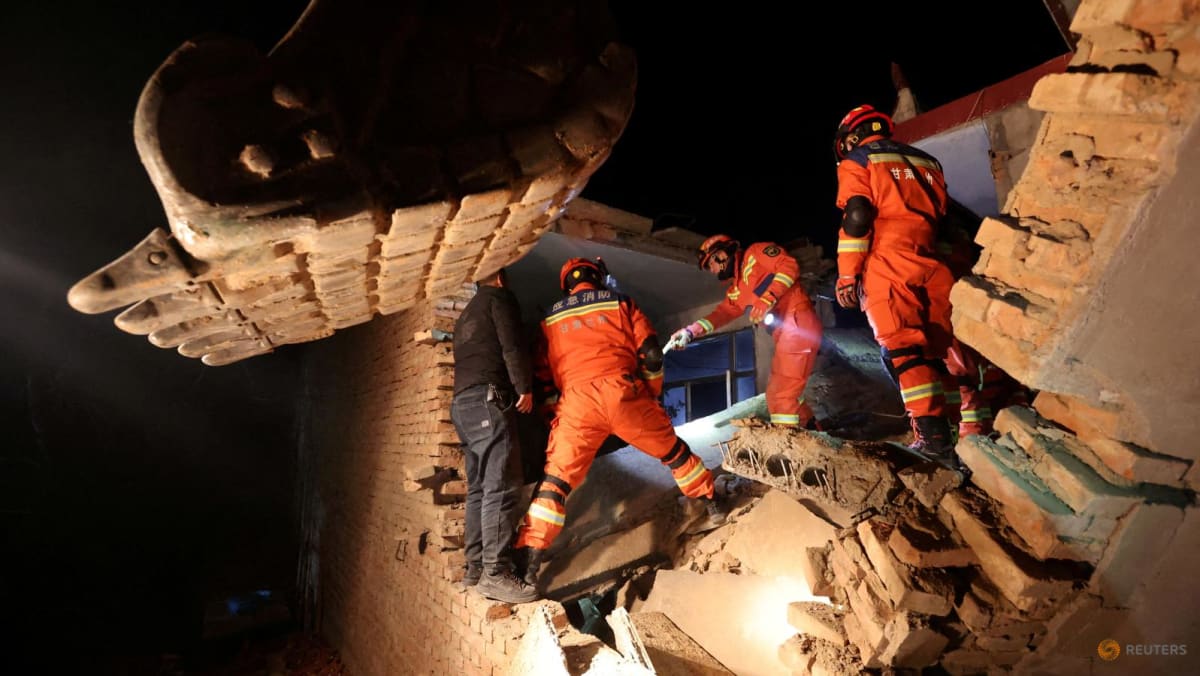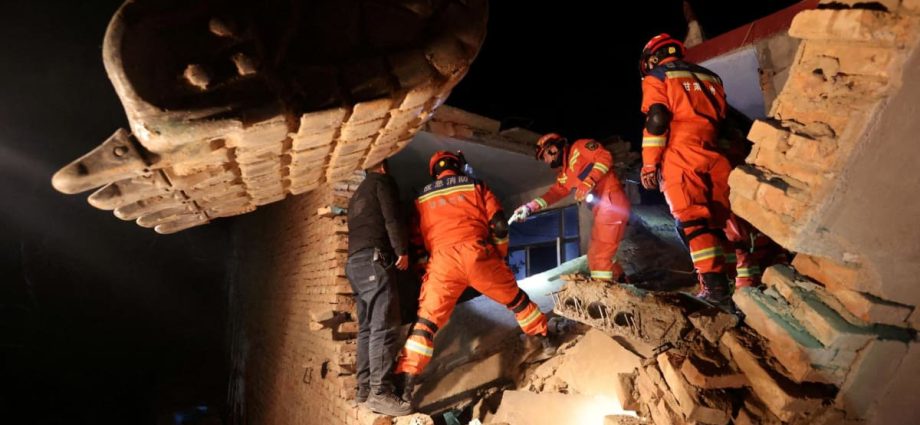
FREEZING TEMPERATURES
Chinese President Xi Jinping called for “all-out efforts” as search and rescue work got underway early Tuesday.
Temperatures are below freezing in the high-altitude area, and rescuers should be on guard for secondary disasters, he said, according to CCTV.
Provincial officials said at a press conference on Tuesday morning that nearly 5,000 homes had been damaged by the quake in Gansu.
State media reported that power and water supplies were disrupted in villages around the epicentre but that some electricity had later been restored.
Footage from one of the worst-hit places on CCTV showed residents warming themselves by a fire while emergency services set up tents.
CCTV said more than 1,400 firefighters and rescue personnel had been sent to the disaster zone, while another 1,600 remained “on standby”.
The broadcaster said supplies including drinking water, blankets, stoves and instant noodles were also being sent to the area.
It added that the central government had preliminarily diverted 200 million yuan ($28 million) in relief funding to “guarantee the security of people’s lives and property, and minimise the impact of losses from the disaster”.
Footage showed emergency vehicles driving along snow-lined highways towards the scene with their lights flashing.
Rescue workers in overalls were pictured shoulder-to-shoulder in the trucks, while other images showed them lining up in ranks to receive instructions.
Other clips showed emergency personnel going through debris by torchlight, unfolding orange stretchers for the casualties.
Hundreds of people have been evacuated in Gansu, officials said.
Earthquakes are not uncommon in China. In August, a shallow 5.4-magnitude earthquake struck the eastern part of the country, injuring 23 people and collapsing dozens of buildings.
In September 2022, a 6.6-magnitude quake hit Sichuan province leaving almost 100 dead.
And in 2010, a 6.9-magnitude quake in Qinghai left 3,000 people dead or missing.

